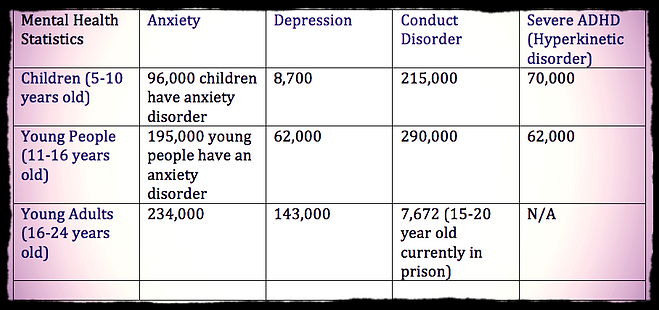The number of diagnoses in children have been increasing, but are they warranted?
An in-depth look into whether over diagnosis is legitimate or if children are truly hyperactive
By Jeremy Hon
PUBLISHED NOVEMBER 10, 2014
Over the past two decades, the number of children diagnosed with ADHD (Attention Deficit Hyperactivity Disorder) has increased substantially in North America. In a study conducted by the Center for Disease Control and Prevention, ‘approximately 11% of children [in the United States] 4 – 17 years of age have been diagnosed with ADHD as of 2011.’ The same study states that there is, on average, a three per cent increase of diagnoses per year from 1997 to 2006. It went on to indicate that boys were more than twice as likely to be diagnosed with ADHD than girls.
And it is not only the diagnoses of ADHD that has increased, but also in autism, depression, anxiety, and bi-polar disorder just to name a few. But it is ADHD, also known as ADD (Attention Deficit Disorder) that has been most prominent in young children.
According to Statistics Canada, ‘ADHD is characterized by inattention, hyperactivity and impulsivity’ and it is one of the most common mental health disorders in young children. Symptoms generally first appear between three to five years old, but tend to get more evident in elementary school and in some cases may last until adulthood.
Although the criteria for ADHD has not changed over the past decade, the number of people who can diagnose or suggest ADHD have altered. Janice Chin, a mother of two boys from Markham, Ontario believes that teachers and educators are much too lenient on suggesting that students have ADHD.
“I used to always get phone calls from Michael’s [her eldest son] teacher [in grade 8] about his lack of respect for authority and hyperactivity,” Chin said in an email. “They said he wouldn’t listen to instructions and had a tendency to stroll around the classroom and distract others.
“In the parent-teacher interview, they suggested that Michael may have ADHD.” Chin remembers.
Although Chin remembers getting those same complaints from teachers in previous years, she never once thought that her oldest son would have ADHD.
“Michael read a lot of books, and liked to do puzzles.” Chin stated. “He also played a lot of soccer and badminton, he liked to stay active and he still does.”
“There is a difference between an active, sociable child and one with ADD.” Chin reiterates.
Although Michael, now 21, never officially got diagnosed with ADHD, he feels like it was ‘just a phase in his life that he grew out of.’
“I think they [the teachers] were a little keen on saying that I had this or I had that. At such young ages, a lot of kids are trying to get to know themselves.” Michael explained. “That was how I learned and made new friends, to walk around, talk to everyone and stay moving.”
“I must admit, I am much better now at staying in the library and just studying for a couple of hours, but I still need my breaks here and there.” Michael quickly added in. “But I don’t think I really ever did have ADD because I loved reading books and I could always focus on a story, or a magazine that interested me.”
Assistant professor of behavioural disorders at the University of Toronto, Min Zhou believes that over diagnosis may be prevalent in today’s society but it could be the excessive use of technology or the lack of greenery in a child’s life.
“Kids are staring at computer screens more and more these days. Using an iPad, or a tablet just before bed, really affects sleep…especially those at a very young age.” Zhou stated. “As a result, children receive delayed sleep onset, melatonin suppression and less deep REM (Rapid Eye Movement) sleep.”
Zhou went on to explain that a lack of sleep not only prevents the body from growing, healing and resting from the daily tolls but it can also lead to a lack of focus and attention.
“When you are running on little sleep, or not enough sleep, you get tired a lot easier and a lot faster.” Zhou described. “Because your body didn’t get sufficient the night before, it now cannot perform its daily functions such as reading that textbook, or being attentive in geography class. Having enough rest is vital not only for the body, but for the mind as well.”
An article in MNT (Medical News Today) shows that a lack of exposure to the outdoors can result in the development of ADHD. The research revealed that ‘living in States with greater sunshine may protect against the development of ADHD.’ The article showcased that children with ADHD tend to do better when they play outside on grass as opposed to indoors or playing outdoors on concrete. By going outside, and staying active, whether it be partaking in sports or just frolicking in the rain, it allows them to expel some of that hyperactive energy and it provides them with that physical activity that they require. This then translates back into the classroom as students with ADHD can focus better as they know recess is just around the corner.
Aside from simply using up that stored energy, going outdoors and absorbing that sunshine helps in preventing or slowing down the development of ADHD. The research suggests that ‘greater solar intensity may protect against the development of ADHD. There is a wide variation of reported ADHD from a low of 5.6% in Nevada to a high of 15.6% in North Carolina.’
Whether or not these children really do have ADHD, the unchanging fact is that there is an increasing number of diagnoses and it is up to parents and guardians to look after these symptoms and determine if their child really requires medication or not.

CHART BY JEREMY HON

